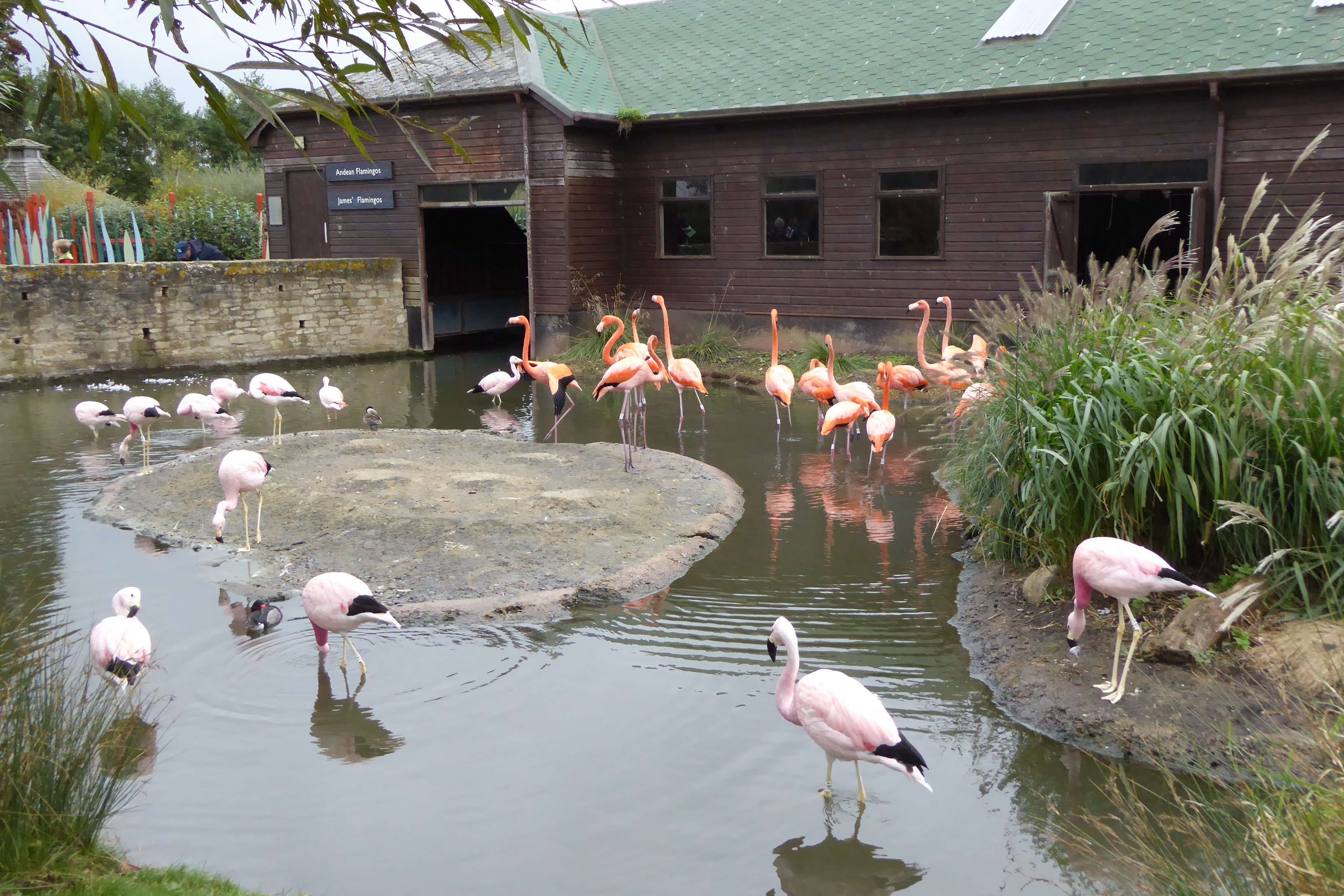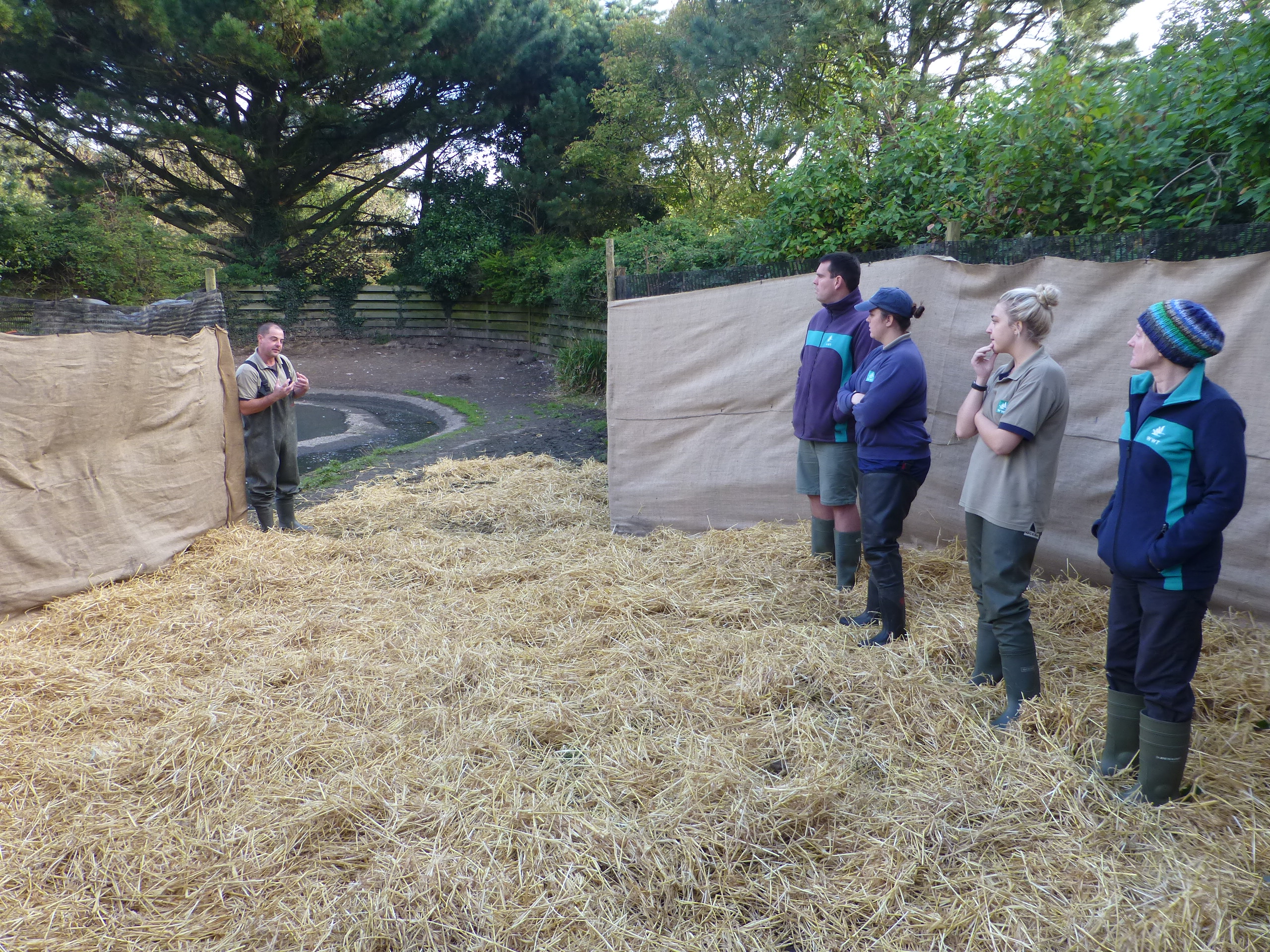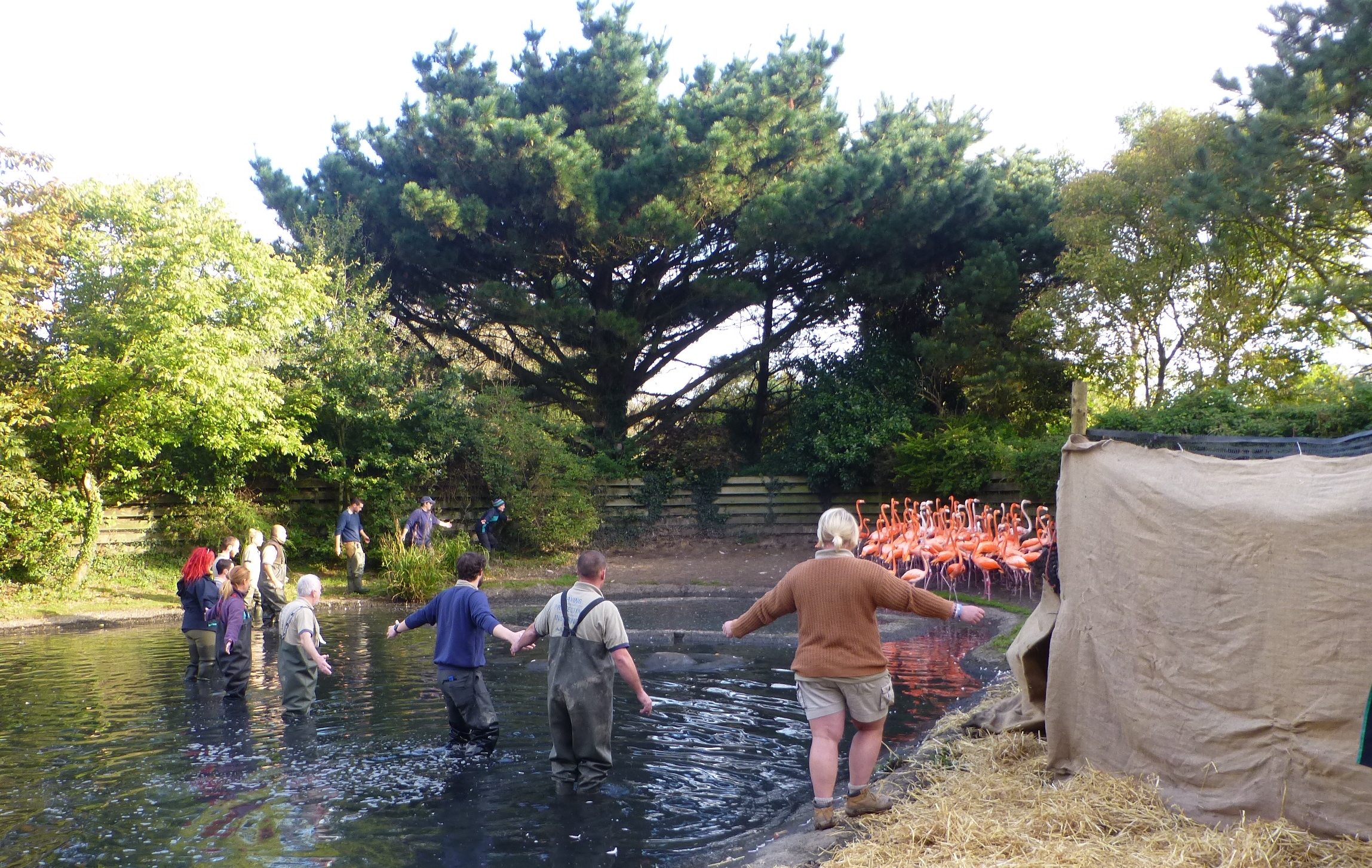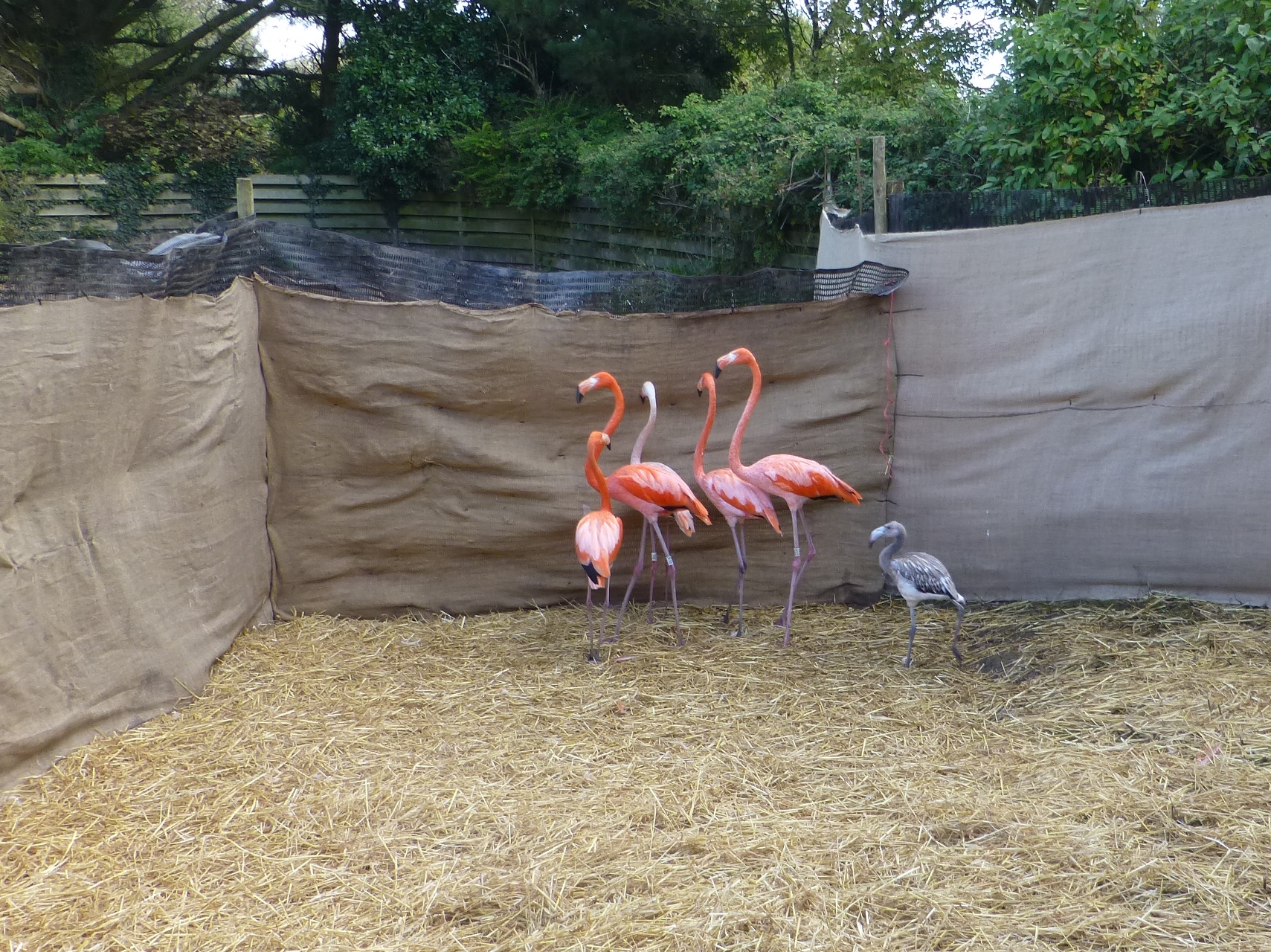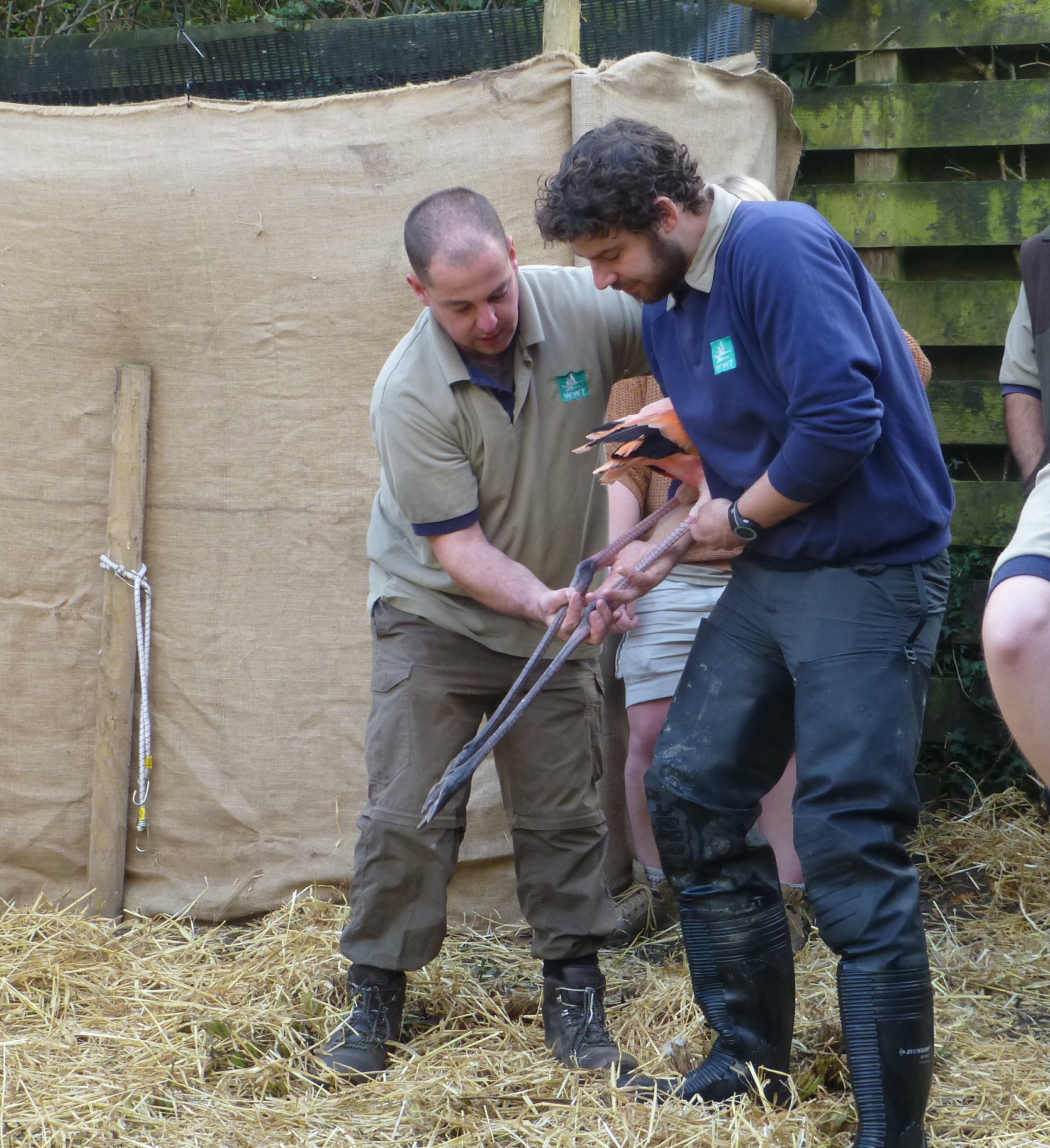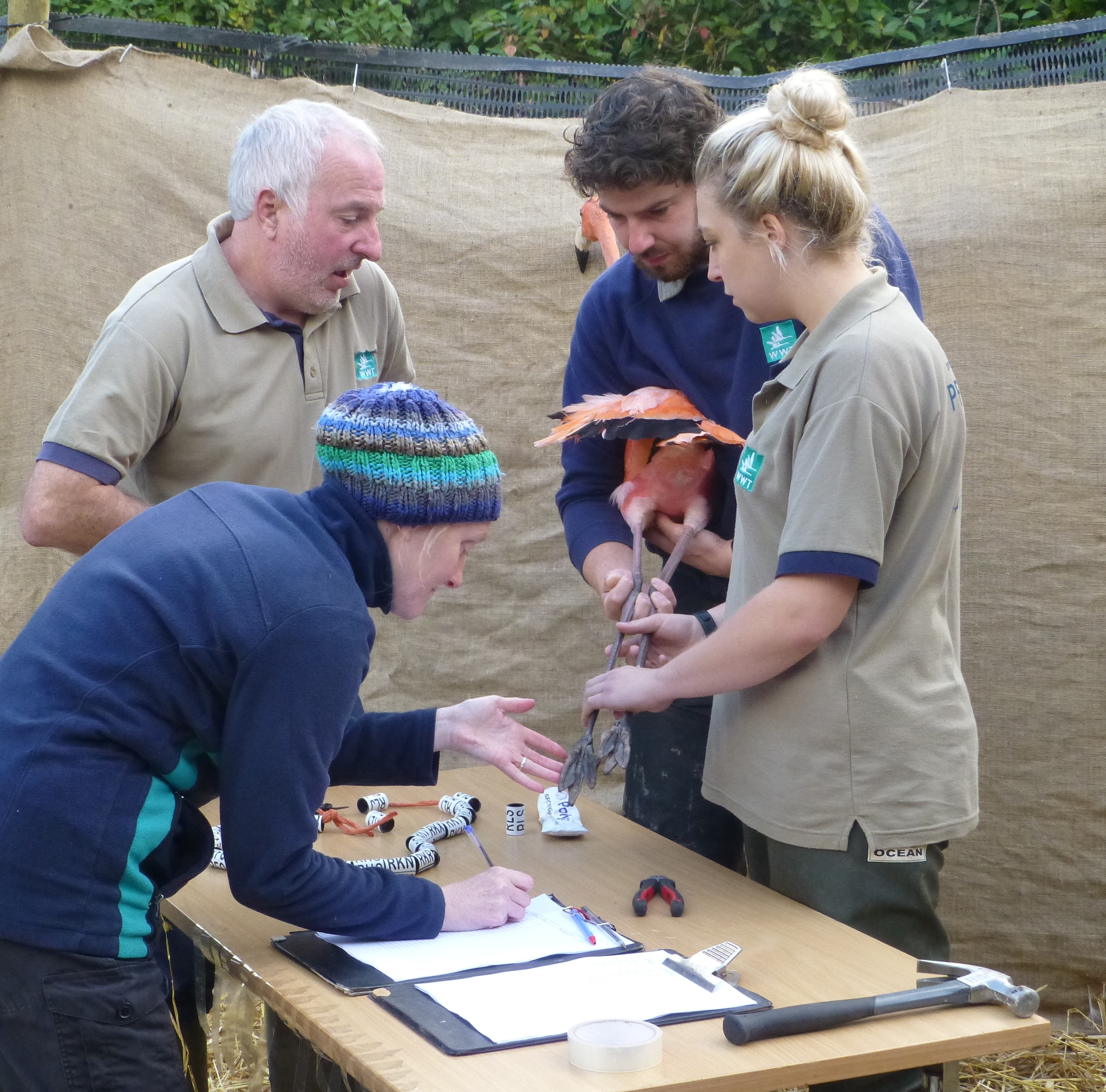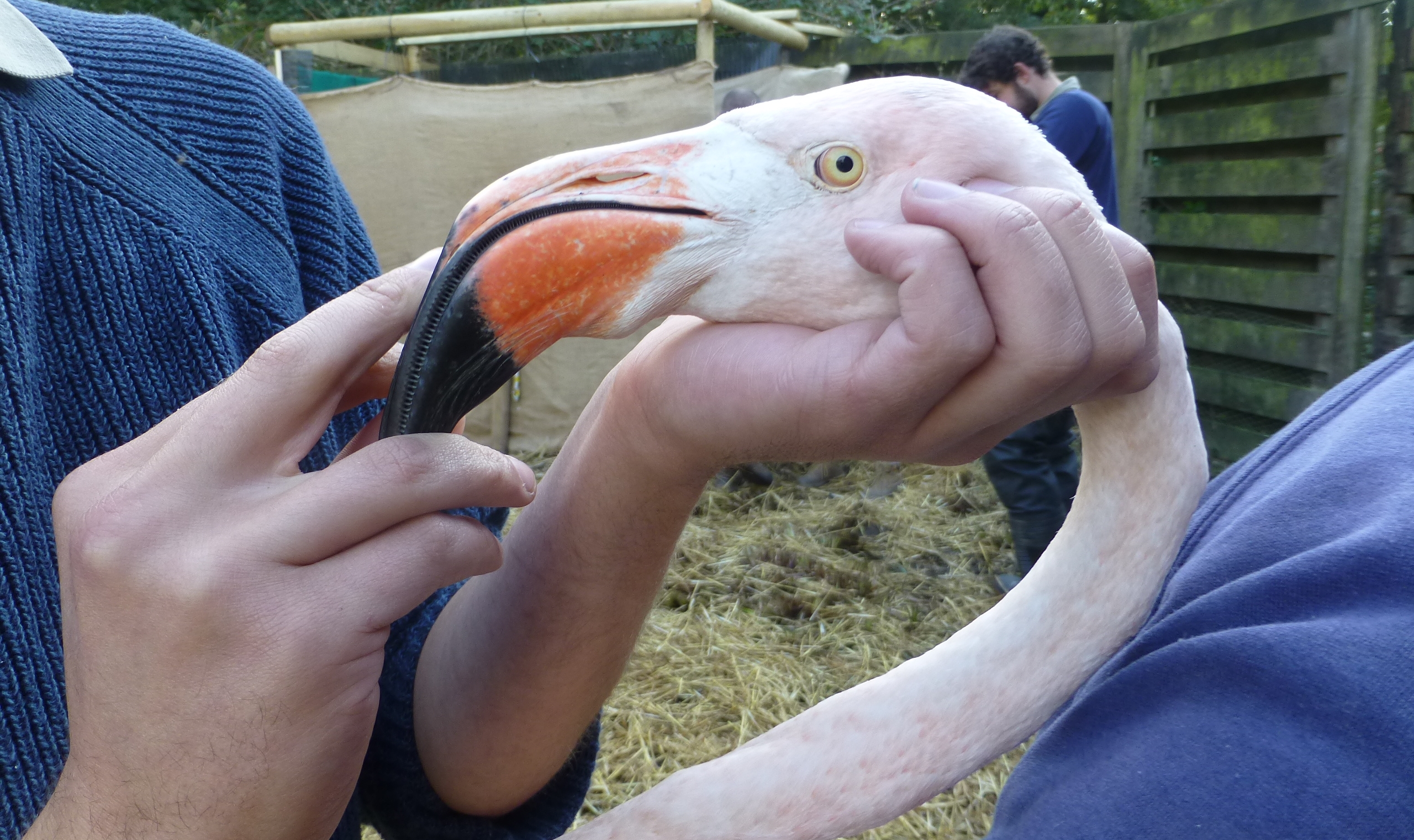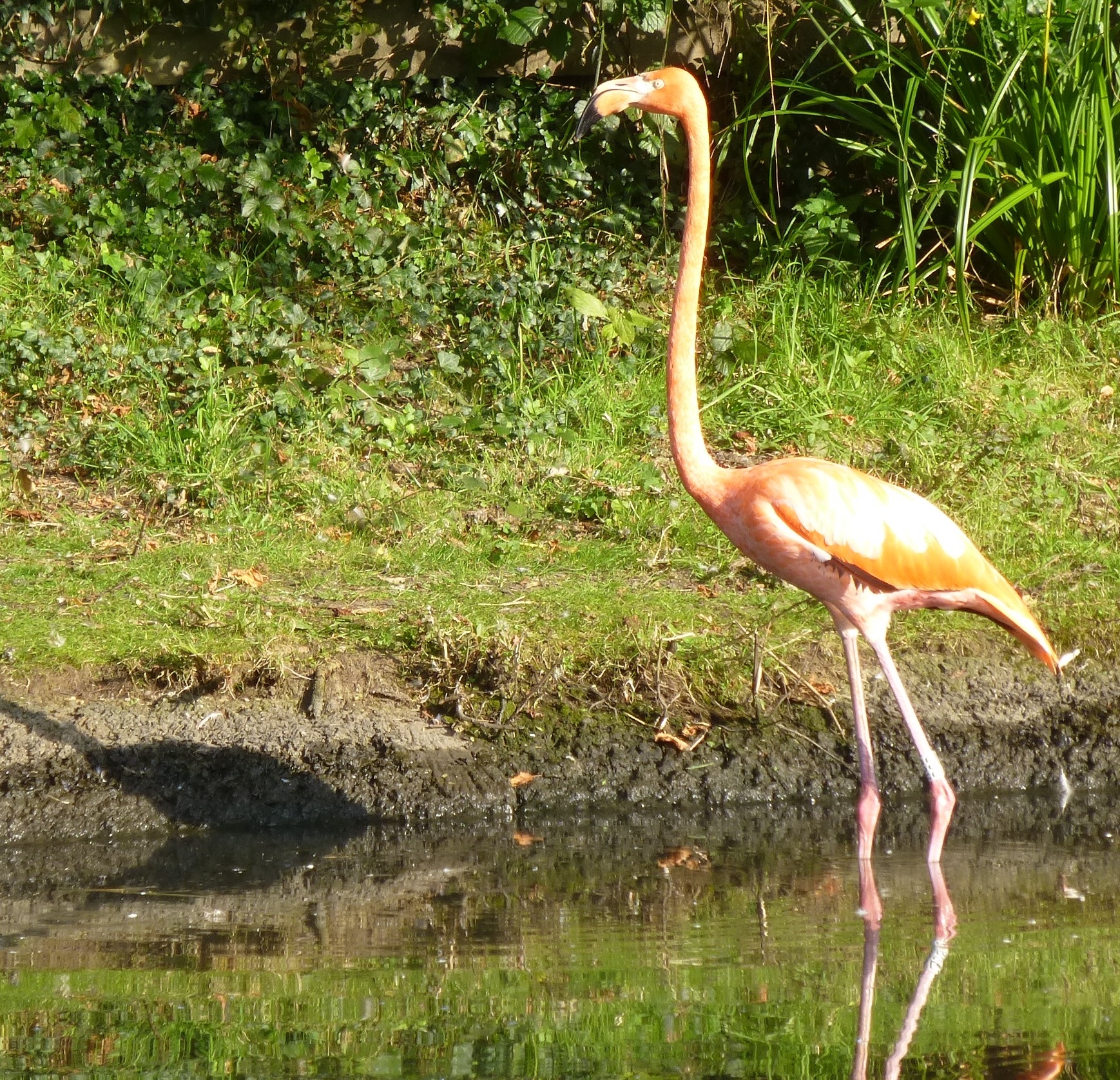Catching flamingos in Wales
As autumn is a quiet time in the flamingo calendar, it is a good part of the year to organise and run a flamingo catch. As nesting is over, and birds are not really in display mode, there is minimal disturbance to the flock. The latest WWT flamingo catch to occur took place at WWT Llanelli in October. There were several reasons for this catch taking place, but most pressingly, there was a need to bring over some young birds to the flock at Slimbridge. The breeding success at Llanelli being so good that the birds' house was rapidly starting to fill up. So with less room in Wales than at Slimbridge, 15 young, virile birds have made their way to Gloucestershire to join the resident Caribbean flock at Slimbridge.
New arrivals at WWT Slimbridge, destined for the Caribbean Flamingo Pen first settle in to the calmer, more relaxed environment of the Andean Pen. The Andeans are invaluable for helping new birds feel at home and find their feet after a move to the collection at Slimbridge.
Aren't they stunners! The new Caribbean flamingos from WWT Llanelli are the best of the best. Credit to the hard work of the WWT aviculturists for keeping the flamingos in tip-top condition.
I have posted about flamingo catches before, so I thought I would do a pictorial run-down of what happens in the catch, and why the birds, in this instance, were handled by their keepers. I hope that you'll find it interesting and fun to read about.
Sparky prepares the flamingo catchers. Each person has a defined role in a flamingo catch. The team are standing in the straw-lined corral that is made up of hessian sacks built into a circle. This can be closed off when the birds enter, and then an opening allows for small groups of five or six to be moved out at a time. It is important that birds remain with other flamingos, so they stay calm, and that handling time is kept to a minimum. Birds have their legs pointing downwards (never tucked underneath them) and should be able to wiggle their legs if they want to.
These two photos show the flamingos being gently moved into the straw-padded corral. The flamingos are kept together in one flock, and move as a group. As one bird moves in a particular direction, so others will follow. There is no chasing or scaring of birds as they walk in the direction that Sparky and his team want them to go.
Birds waiting their turn in the corral. Flamingos are processed for handling in small groups. That means no flamingo is ever by itself inside the corral, or at the end of the process when released. Birds are also in visual and auditory contact throughout the handling time, and so the flock is always kept together. This is the best way to catch flamingos from an animal welfare and ethical perspective, and WWT has trained many animal collections around the world in how to do this procedure correctly.
Sparky demonstrates how to correctly pick up and carry a flamingo, and how to hold their legs to keep them loose but secure. Flamingo legs are very strong downwards (to carry their weight) but it is important that, sideways on, they are not damaged or scratched. Once the flamingo is secure, it is passed to the handler (photo below) for health checking, microchipping and ringing.
A bird having its details taken (age, sex, current ring number). If a new ring is needed, then it will be applied here. The string of Darvic (plastic) leg rings on the table is ready for the ringing team to fit to the bird's leg. The hammer is not used for ringing, or any part of the handling process!
Michelle, one of the WWT vet's prepares the microchip reader. Several species of flamingo, including Caribbeans, require microchipping as CITES (The Convention on the International Trade in Endangered Species) requires organisations that hold these species to chip their birds so they know who owns them, that records can be kept up-to-date, and that birds can be traced if needed.
These two photos show a bird having its microchip read. The black plastic bag is padding for the bird's wings as it is placed on its back, with the reader scanning its breast. Just the same process as how dogs and cats are often microchipped by their owners at the vets.
A patient queue of flamingos. Calm birds, that are well-handled, remain comfortable and do not panic during the catch. Therefore the handlers, processers and those doing tasks such as ringing or health checks, can take the right amount of time needed to do the job well. As the birds have been thoroughly prepared for being caught, it is not a stressful experience and hence everyone's job runs more smoothly.
One of the benefits of a flamingo catch is that it allows for very close-up views of the individual birds. It takes the trained eye of Sparky, or Phil, or any of the other specialised WWT flamingo keepers to spot particular individuals in the large flocks that they look after. So for everyone else who may be less familiar with the birds, to get these good views helps to enhance their understanding of the birds and their behaviour. For example, this very pale plumage (in the photo above) tells us that this adult flamingo has bred this summer, and the colour change is really dramatic when seen at such close quarters.
And then the catch is done. Relaxed and tranquil flamingos wade around in their enclosure when all the equipment has been packed away and the birds have been released from their house. The flamingos, once processing is finished, are let go back into their house as it is calm and quiet. They are soon allowed back into their pool when all of the people involved in the catch have vacated their enclosure.
And that, folks, is how you run a flamingo catch successfully and smoothly :-)
